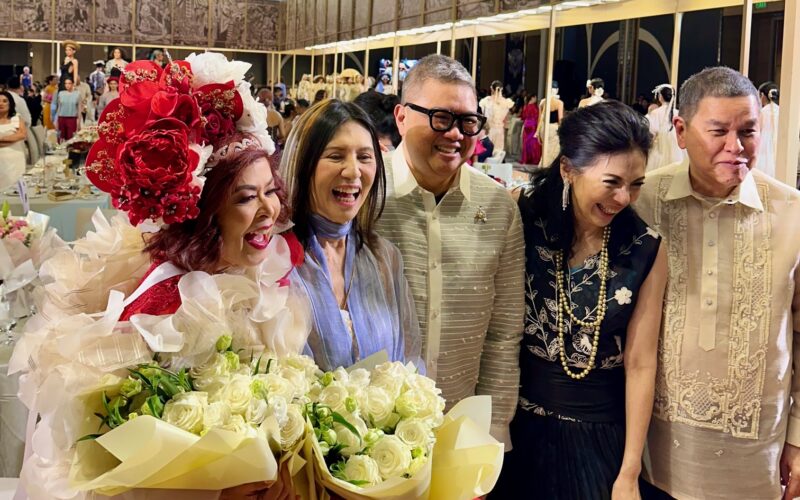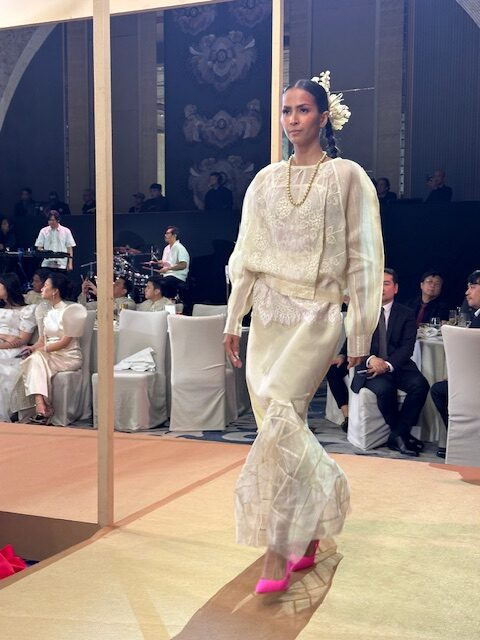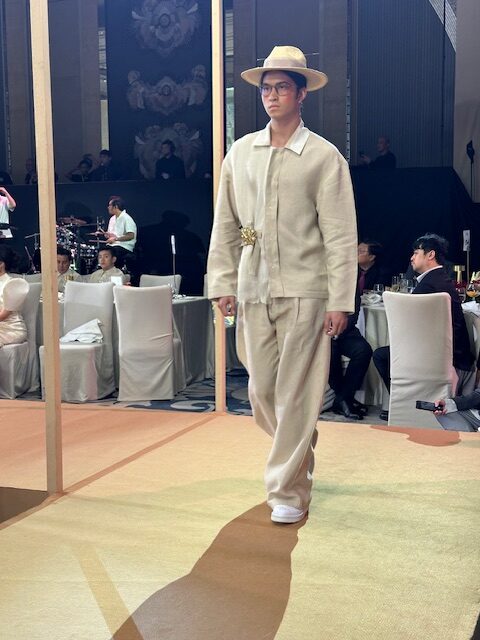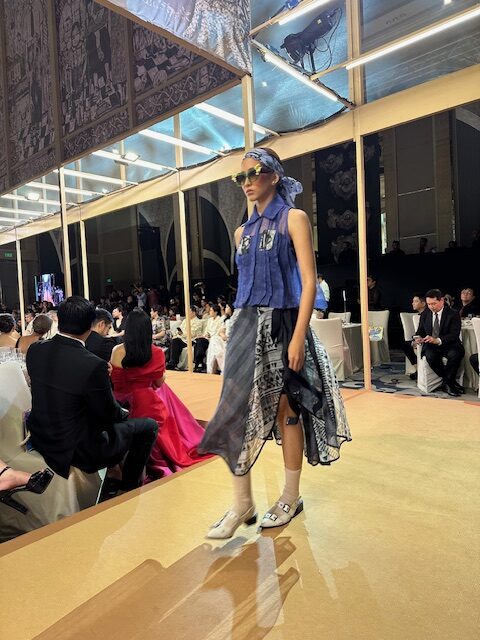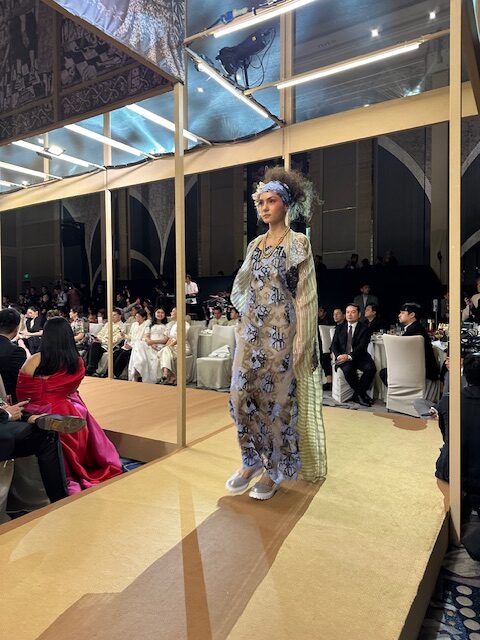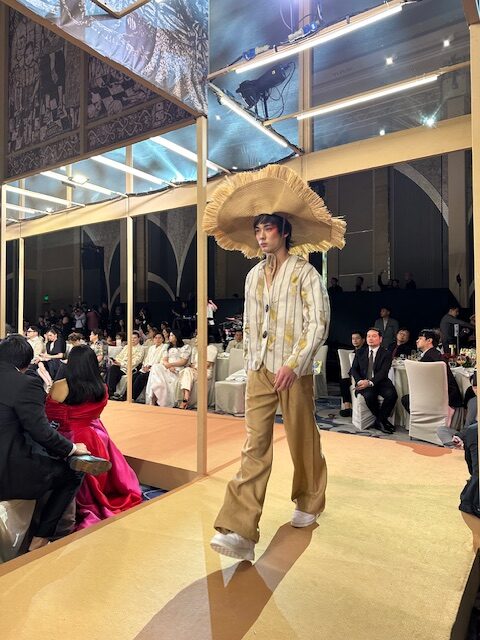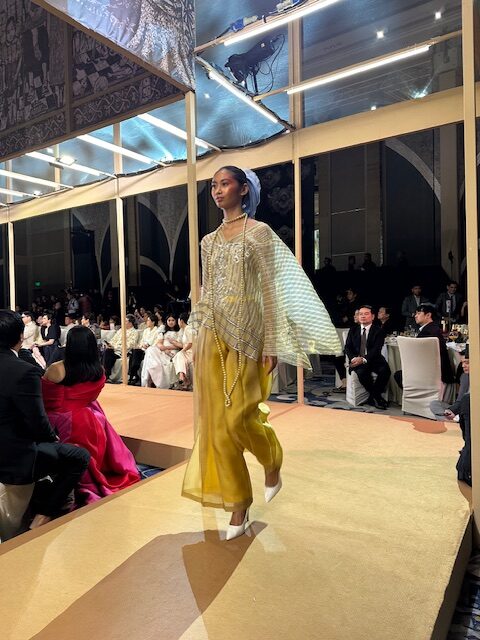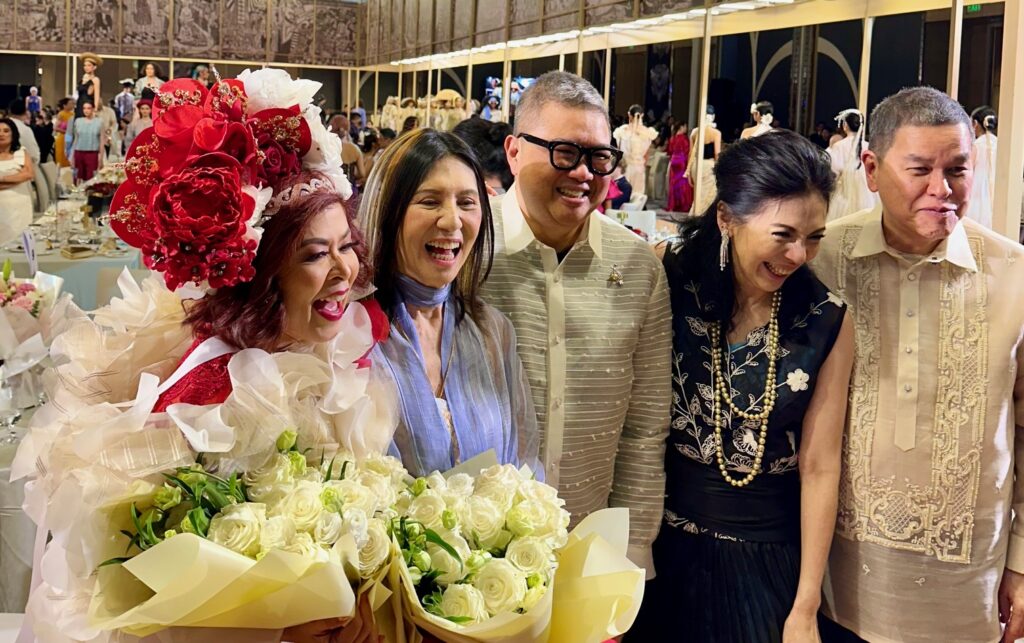Just like what she did with knits, making it mainstream in a warm country like the Philippines, Lulu has done it again, this time for the piña. In her recent solo show for Red Charity Gala, her biggest show to date, she has shown today’s generation of Filipinos that piña is no longer their grandparents’ fabric. Treated with enough panache and imagination, it can now be everyone’s fabric of choice, making it an integral part of the country’s heritage.
By ALEX Y. VERGARA
As creative people, it’s typical among not a few fashion designers to simply let their clothes speak for themselves. Being highly visual and crafty individuals—and we mean that in a good way—such a general trait is quite understandable. Seldom do you see a talent like Lulu Tan Gan, the featured designer in last Tuesday’s annual Red Charity Gala, whose clothes are as wonderfully articulated as her ideas.
She may appear hip, youngish and everyone’s idea of their favorite big sister, but Lulu, as far as I’m concerned, is an intellectual heavyweight in the world of fashion, whose knowledge and mastery of her craft and the material in front of her – be it cotton, silk, knits or, this time, piña – are legend. This trait was again evident in her 60-look collection made primarily of piña that went down the runway at Shangri-La Fort’s grand ballroom.
Produced by Kaye Tinga and Tessa Prieto, styled by Noel Manapat and Gino Gonzales, and directed by Robby Carmona, the show dubbed as “Farm to Fashion” was Lulu’s foremost attempt at innovation. And how!
From knits to piña
Just like what she did with knits decades ago, tapping into its versatility and, with the right heft and material, making it acceptable in a warm country like the Philippines, Lulu has done it again with the piña.
With this show, which took Lulu and her collaborators almost a year to conceptualize, source, execute and accomplish, she has also shown today’s Millennials and Zoomers that piña is no longer their grandparents’ fabric. Treated with enough panache and imagination, and combined with the right materials—from ethnic-looking woven fabrics to silk-blend linen, piña can now be everyone’s fabric of choice, making it truly a national emblem and an integral part of the country’s heritage.
Through her efforts, Lulu also hopes to disabuse people’s common and often-mistaken perception that piña is fit only for special occasions. She also insisted that it isn’t as difficult to wear and care for as most people think, pointing to the light blue piña top she was wearing.
“Although I know piña can be a bit scratchy, it depends on how you handle it,” she said. “You can wash it and iron it. Like the piece I’m wearing now is already, what, 10, 12 years old.”
Lulu just puts some of her piña-blended garments in a net bag before sticking it inside the washing machine. Through her designs and fabric treatments and manipulation, she hopes to transform the common Pinoy perception of piña as a traditionally stiff material to one with ample room for “fluidity.”
And since it’s a lightweight, almost opaque material, Lulu reminds those who are initially giving piña garments a try to layer them with more skin-friendly inner wear such as T-shirts and chemises.
We saw the possibilities right before our eyes as her creations, which consisted of dresses, blouses, trousers, coats, capes, jackets, caftans and boleros, made their way down the runway. It reminded us that Lulu’s pieces were also a good way to test one’s innate sense of style, as they could easily be mixed and matched with existing wardrobe staples. The limit is in one’s imagination.
“I have a deep personal connection with the piña fabric, captivated as I am with its ethereal beauty,” Lulu continued. “Through innovation, I wanted to showcase the innovative potential of the piña fabric in modern fashion.”
Use of natural dyes
Such innovation included hand-block and silk-screen printing. To keep monotony at bay, she also dyed some of her piña material, which naturally comes in ecru, using natural dyes such as indigo, turmeric and sappan leaves to achieve looks in shades of blue, yellow and pink. Some piña fabrics were spruced up with dainty embroidery done by embroiderers from Laguna.
“When you’re using natural material and you want to be sustainable, your designs tend to change from the sketches to the actual garment,” she shared. How come? “Not only do you make do with what is available, you also maximize the available material you have. I hardly had any wastage. But the challenging part was waiting for these natural materials to come in.”
But why go through great lengths and, in the process, be at the mercy of a scarce and relatively expensive material like piña that takes time to process, weave and fashion into clothes, when she could have very well used more readily available materials?
“Tradition thrives when it evolves through contemporary participation, blending the old with the new to keep it alive and relevant,” she reasoned. “I also aim to redefine the intangible essence of piña, elevating it as a luxury fabric.” And elevate piña, she did!

